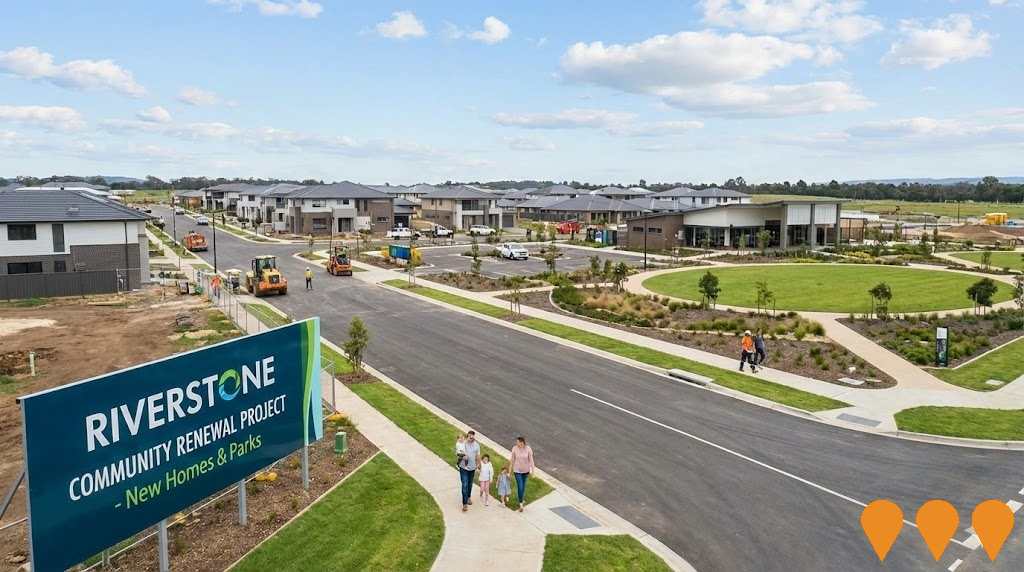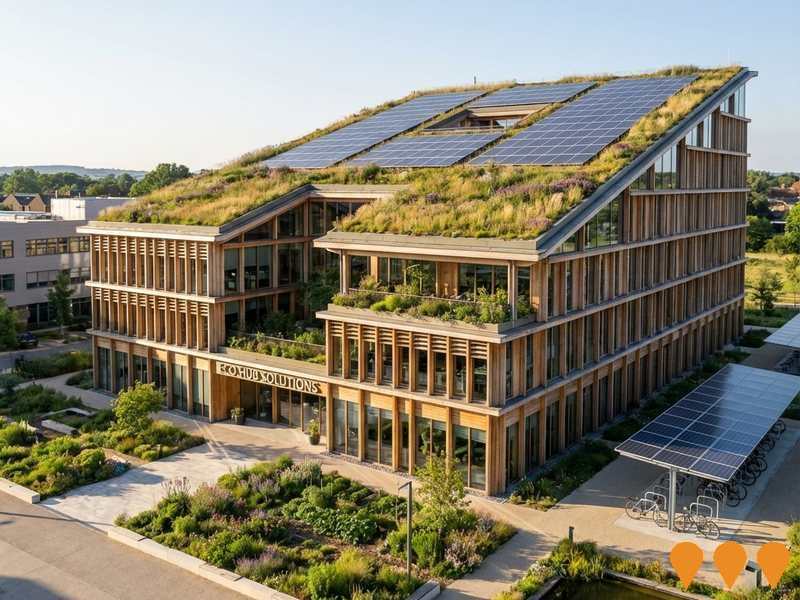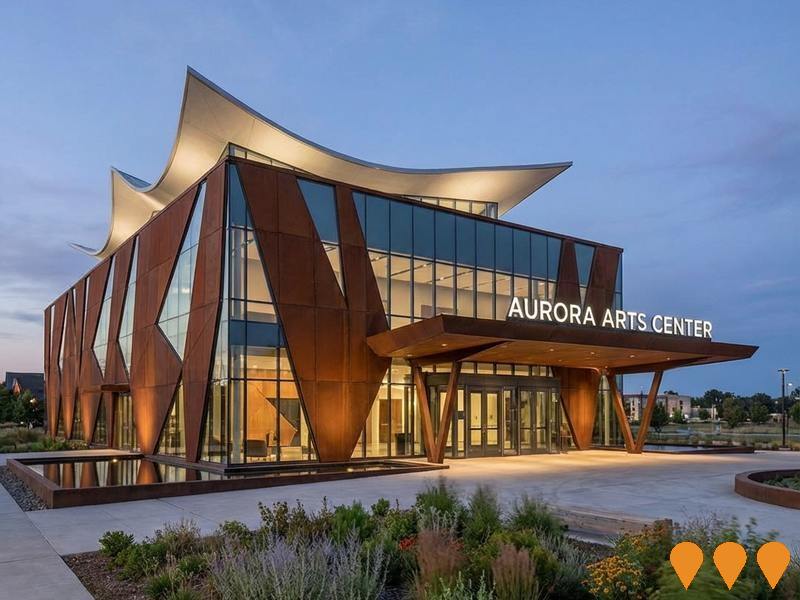Chart Color Schemes
est. as @ -- *
ABS ERP | -- people | --
2021 Census | -- people
Sales Activity
Curious about local property values? Filter the chart to assess the volume and appreciation (including resales) trends and regional comparisons, or scroll to the map below view this information at an individual property level.
Find a Recent Sale
Sales Detail
Population
Toorak Gardens has seen population growth performance typically on par with national averages when looking at short and medium term trends
Toorak Gardens' population is approximately 17,351 as of Aug 2025. This figure represents an increase of 716 people (4.3%) since the 2021 Census, which reported a population of 16,635. The change is inferred from the estimated resident population of 17,170 in June 2024 and an additional 242 validated new addresses since the Census date. This results in a population density ratio of 2,593 persons per square kilometer, placing Toorak Gardens in the upper quartile relative to national locations assessed by AreaSearch. The area's 4.3% growth since census is within 0.1 percentage points of the SA3 area (4.4%), indicating competitive growth fundamentals. Overseas migration was the primary driver of population growth during recent periods.
AreaSearch uses ABS/Geoscience Australia projections for each SA2 area, released in 2024 with a base year of 2022. For areas not covered by this data and years post-2032, the SA State Government's Regional/LGA projections are adopted with adjustments made using weighted aggregation methods from LGA to SA2 levels. Future population dynamics anticipate an increase just below the median of statistical areas across the nation, with Toorak Gardens expected to increase by 2,009 persons to 2041 based on the latest population numbers, representing a total increase of 10.5% over the 17 years.
Frequently Asked Questions - Population
Development
AreaSearch assessment of residential development activity positions Toorak Gardens among the top 25% of areas assessed nationwide
Toorak Gardens has received approximately 172 dwelling approvals annually. Between FY-21 and FY-25, around 860 homes were approved, with an additional 11 approved in FY-26 to date. On average, over these five financial years, 0.8 new residents arrived per new home built.
This indicates that new construction is keeping pace with or exceeding demand, providing more options for buyers and potentially driving population growth beyond current projections. The average expected construction cost of new properties is $594,000, suggesting developers are targeting the premium market segment. In FY-26, there have been $70.4 million in commercial approvals, demonstrating strong momentum in commercial development. Compared to Greater Adelaide, Toorak Gardens has seen 71.0% higher new home approvals per capita, offering greater choice for buyers. New developments consist of 14.0% standalone homes and 86.0% attached dwellings, promoting higher-density living that creates more affordable entry points for downsizers, investors, and first-home buyers. This represents a significant shift from the current housing mix, which is currently 55.0% houses.
Toorak Gardens has around 73 people per dwelling approval, indicating characteristics of a low density area. Population forecasts suggest Toorak Gardens will gain approximately 1,828 residents by 2041. Given current construction levels, housing supply should adequately meet demand, creating favorable conditions for buyers while potentially enabling growth that exceeds current projections.
Frequently Asked Questions - Development
Infrastructure
Toorak Gardens has limited levels of nearby infrastructure activity, ranking in the 17thth percentile nationally
Five projects identified by AreaSearch are expected to impact the area significantly. These include Glenside Development, UniSA Magill Campus Redevelopment (Magill Project), Burnside Village Expansion, and 12-16 Glen Osmond Road Mixed-Use Development.
Professional plan users can use the search below to filter and access additional projects.
INFRASTRUCTURE SEARCH
 Denotes AI-based impression for illustrative purposes only, not to be taken as definitive under any circumstances. Please follow links and conduct other investigations from the project's source for actual imagery. Developers and project owners wishing us to use original imagery please Contact Us and we will do so.
Denotes AI-based impression for illustrative purposes only, not to be taken as definitive under any circumstances. Please follow links and conduct other investigations from the project's source for actual imagery. Developers and project owners wishing us to use original imagery please Contact Us and we will do so.
Frequently Asked Questions - Infrastructure
Glenside Development
A $400 million master-planned community transforming the former Glenside Hospital site into approximately 1,200 homes, including apartments and townhouses, with a focus on modern design, heritage preservation, and significant public open space (over 30% of the 16.5-hectare site). Key components like Bloom Stage 1 and Banksia Apartments are complete, with Bloom Stage 2 under construction. The state government has recently adopted a Code Amendment to allow building heights up to 20 storeys in a specific north-west corner of the development, which could increase the total dwelling yield from 1,043 to approximately 1,200.

Norwood Oval Redevelopment
Major upgrade of the historic Norwood Oval including new grandstand, lighting, changerooms and community facilities, completed 2022-2024.

274-275 North Terrace Development Site
Premium 2,800sqm triple-street frontage development site opposite Lot Fourteen. Potential for Adelaide's tallest tower with mixed-use development including residential apartments, build-to-rent, hotel, student accommodation, retail and commercial space.

O-Bahn City Access Project
$160 million guided bus tunnel project extending O-Bahn system from Gilberton to cross-city priority bus lanes on Grenfell Street. Features 670-metre tunnel, centrally aligned priority bus lanes on Hackney Road, and improved access for 79,000 daily road users. Benefits Modbury through improved O-Bahn connectivity.

Burnside Village Expansion
Major expansion of Burnside Village shopping center bringing luxury brands including Gucci, Louis Vuitton, and Coco Republic to Adelaide. Features premium retail spaces, dining precincts, and enhanced parking facilities in a $200 million redevelopment.

12-16 Glen Osmond Road Mixed-Use Development
Construction of two seven-storey mixed-use buildings with publicly accessible central pedestrian link. Each building comprises two levels of commercial space, 35 residential apartments and 4 townhouses, with three levels of parking and shared terrace areas.

UniSA Magill Campus Redevelopment (Magill Project)
The South Australian Government has acquired the 14.62 hectare UniSA Magill campus site, on both sides of St Bernards Road, and transferred it to Renewal SA to be planned as a mixed use residential precinct. Renewal SA is preparing a master plan and structure plan that will guide future rezoning and development, with a vision for more than 400 new homes in a range of housing types including affordable housing, together with enhanced open space, tree canopy, community and recreational facilities, and protection of key features such as Murray House and the Third Creek corridor. Initial community engagement on the high level vision and opportunities for the site ran from November 2024 to February 2025, and feedback is now being used to refine the draft structure plan ahead of a future Code Amendment and staged redevelopment over the next decade, once UniSA leaseback arrangements expire.

Hutt Street Luxury Apartments
10-storey mixed-use development comprising 40 luxury apartments on floors 1-9, 372sqm of ground-floor retail space, two-level basement car park, and rooftop solar panels. Designed by DKO Architecture, the 35m tower sits above a two-storey podium on a 1,241sqm prime CBD site at the corner of Allen Place.

Employment
Toorak Gardens ranks among the top 25% of areas assessed nationally for overall employment performance
Toorak Gardens has a highly educated workforce with professional services being strongly represented. The unemployment rate in the area is 1.9%, which is lower than Greater Adelaide's rate of 4.0%.
Over the past year, there has been an estimated employment growth of 1.7% in Toorak Gardens. As of June 2025, 8,955 residents are employed with an unemployment rate of 2.1%, which is below Greater Adelaide's rate. The workforce participation rate in Toorak Gardens is somewhat lower than Greater Adelaide's at 59.1%. The key industries for employment among residents are health care & social assistance, professional & technical services, and education & training.
Notably, the area has a specialization in professional & technical services with an employment share of 2.0 times the regional level. In contrast, construction employs only 5.0% of local workers compared to Greater Adelaide's 8.7%. The ratio of 0.7 workers per resident indicates a higher level of local employment opportunities than usual. Based on AreaSearch analysis of SALM and ABS data from June 2025, employment increased by 1.7% over the past year while labour force also increased by 1.7%, with unemployment remaining essentially unchanged. In comparison, Greater Adelaide recorded an employment growth of 2.1%. Jobs and Skills Australia's national employment forecasts from May 2025 project a 6.6% increase in employment over five years and 13.7% over ten years nationally. However, applying these projections to Toorak Gardens' employment mix suggests local growth of approximately 7.4% over five years and 15.1% over ten years.
Frequently Asked Questions - Employment
Income
Income analysis reveals strong economic positioning, with the area outperforming 60% of locations assessed nationally by AreaSearch
Toorak Gardens' income level is exceptionally high nationally according to the latest ATO data aggregated by AreaSearch for financial year 2022. Toorak Gardens' median income among taxpayers was $58,422 and the average income stood at $95,686, which compared to figures for Greater Adelaide of $52,592 and $64,886 respectively. Based on Wage Price Index growth of 12.83% since financial year 2022, current estimates would be approximately $65,918 (median) and $107,963 (average) as of September 2025. Census 2021 income data shows personal income ranks at the 77th percentile ($977 weekly), while household income sits at the 61st percentile. Income brackets indicate the largest segment comprises 27.8% earning $1,500 - $2,999 weekly (4,823 residents), consistent with broader trends across the surrounding region showing 31.8% in the same category. Higher earners represent a substantial presence with 31.6% exceeding $3,000 weekly, indicating strong purchasing power within the community. After housing costs, residents retain 87.8% of income, reflecting strong purchasing power and the area's SEIFA income ranking places it in the 9th decile.
Frequently Asked Questions - Income
Housing
Toorak Gardens displays a diverse mix of dwelling types, with a higher proportion of rental properties than the broader region
Toorak Gardens' dwellings, as per the latest Census, consisted of 55.2% houses and 44.8% other dwellings (semi-detached, apartments, 'other'). Adelaide metro had 67.0% houses and 33.0% other dwellings. Home ownership in Toorak Gardens was 44.0%, with mortgaged dwellings at 28.0% and rented ones at 28.0%. The median monthly mortgage repayment was $2,167, lower than Adelaide's average of $2,300. Median weekly rent in Toorak Gardens was $339, compared to Adelaide's $360. Nationally, mortgage repayments were higher at $1,863 and rents were lower at $375.
Frequently Asked Questions - Housing
Household Composition
Toorak Gardens features high concentrations of lone person households, with a lower-than-average median household size
Family households account for 65.1% of all households, including 30.4% couples with children, 26.5% couples without children, and 7.4% single parent families. Non-family households constitute the remaining 34.9%, with lone person households at 32.5% and group households comprising 2.4%. The median household size is 2.3 people, which is smaller than the Greater Adelaide average of 2.5.
Frequently Asked Questions - Households
Local Schools & Education
Educational achievement in Toorak Gardens places it within the top 10% nationally, reflecting strong academic performance and high qualification levels across the community
Toorak Gardens' educational attainment is notably higher than broader benchmarks. Among residents aged 15+, 52.7% have university qualifications, compared to 25.7% in South Australia (SA) and 28.9% in Greater Adelaide. Bachelor degrees are the most common at 32.8%, followed by postgraduate qualifications (15.2%) and graduate diplomas (4.7%). Vocational pathways account for 19.5% of qualifications among those aged 15+, with advanced diplomas at 9.5% and certificates at 10.0%.
Educational participation is high, with 29.5% of residents currently enrolled in formal education. This includes 9.5% in primary education, 7.8% in secondary education, and 7.5% pursuing tertiary education. The area's three schools have a combined enrollment of 1,520 students as of the latest data. Toorak Gardens demonstrates significant socio-educational advantages and academic achievement, with an ICSEA score of 1148. The educational mix includes two primary schools and one K-12 school. However, local school capacity is limited at 8.8 places per 100 residents compared to the regional average of 21.3, leading many families to travel to nearby areas for schooling.
Frequently Asked Questions - Education
Schools Detail
Nearby Services & Amenities
Transport
Transport servicing is good compared to other areas nationally based on assessment of service frequency, route connectivity and accessibility
Transport analysis shows 100 active stops in Toorak Gardens offering mixed bus services. These are covered by 43 routes, serving 2587 weekly passenger trips. Accessibility is excellent, with residents typically 174 meters from nearest stop.
Daily trips average 369, about 25 per stop weekly.
Frequently Asked Questions - Transport
Transport Stops Detail
Health
Toorak Gardens's residents are healthier than average in comparison to broader Australia with prevalence of common health conditions quite low across both younger and older age cohorts
Health data shows positive outcomes for Toorak Gardens residents with low prevalence of common health conditions across both younger and older age cohorts. Approximately 69% of the total population (12,024 people) has private health cover, higher than the national average of 55.3%.
The most prevalent medical conditions are arthritis and mental health issues, affecting 7.8 and 6.7% of residents respectively. 71.0% of residents declare themselves completely clear of medical ailments, compared to 72.6% across Greater Adelaide. As of the latest data (2021), 26.3% of residents are aged 65 and over (4,566 people), higher than Greater Adelaide's 23.6%. Health outcomes among seniors in Toorak Gardens are particularly strong, performing better than the general population in health metrics.
Frequently Asked Questions - Health
Cultural Diversity
Toorak Gardens was found to be more culturally diverse than the vast majority of local markets in Australia, upon assessment of a range of language and cultural background related metrics
Toorak Gardens, as per the latest data from June 2016, exhibited higher cultural diversity compared to most local areas, with 31.6% of its population born overseas and 26.2% speaking a language other than English at home. Christianity was the predominant religion in Toorak Gardens, accounting for 45.2% of the population, as recorded in the 2016 Census. Notably, Buddhism had a slightly higher representation in Toorak Gardens compared to Greater Adelaide, with 3.1% versus 3.4%.
Regarding ancestry, the top three groups were English (25.8%), Australian (19.3%), and Other (9.3%). Some ethnic groups showed significant differences: Sri Lankan was equally represented at 0.6%, Chinese was slightly underrepresented at 8.7% compared to Greater Adelaide's 9.9%, and Italian was also slightly underrepresented at 5.3% versus the regional figure of 6.0%.
Frequently Asked Questions - Diversity
Age
Toorak Gardens hosts an older demographic, ranking in the top quartile nationwide
The median age in Toorak Gardens is 44 years, which is notably higher than Greater Adelaide's average of 39 years and also exceeds the Australian median of 38 years. Compared to Greater Adelaide, the cohort aged 75-84 is over-represented in Toorak Gardens at 10.1%, while those aged 25-34 are under-represented at 10.0%. According to the Census conducted on August 10, 2021, the population aged 15-24 has grown from 11.6% to 13.2%, and the 75-84 cohort has increased from 8.7% to 10.1%. Conversely, the 45-54 age group has declined from 12.4% to 11.4%. Population forecasts for Toorak Gardens indicate significant demographic changes by 2041. The population aged 85 and above is projected to grow substantially, increasing by 702 people (an 86% rise) from 815 to 1,518. The aging population trend is evident, with those aged 65 and above comprising 65% of the projected growth. Conversely, the populations aged 0-4 and 5-14 are expected to decrease.

